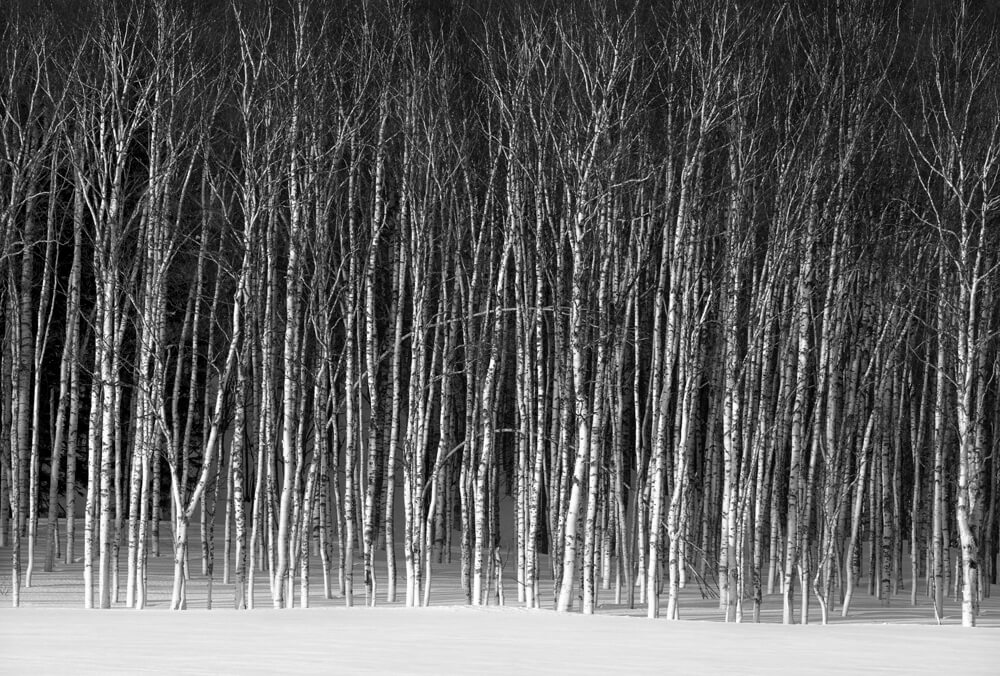Sign Up to Our Newsletter
Get all the latest Wilkinson Cameras news, offers, event infomation & more direct to your inbox.
When it comes to spectacular winter photography few photographers spring to mind faster than our friend and Aspect2i founder, Paul Gallagher. His ‘Digital Darkroom’ talks at Splash, were an inspiration for many.
For the first in our series of Guest blog spots this year, we caught up with Paul to explore a snow-packed winter trip with a difference – Japan!
Not the first location associated with snowy images, but as Paul explains, Hokkaido ticked all the boxes, delivered an exquisite collection of images and has become one of his favourite workshop locations.

‘I love winter photography and in good snow conditions it explores the simplistic and minimalist nature of a landscape in the depths of the winter. The landscape is transformed and essentially simplified by the deep snow leaving a very elemental canvas with which to work. This provides both advantages and challenges. The extreme cold temperatures can be challenging but the rewards are immeasurable. I had been to many countries during the winter including Iceland, Norway and Scotland, but ‘true’ snow conditions were never really guaranteed so I had to travel further afield.
‘One location that I knew ticked all of the boxes was the island of Hokkaido in Japan and in February 2017 I headed out there for the first time. I had intended to travel here for many years because of the perfect winter snow and I decided to one day run a photography workshop - this was to be the research trip.
‘The best way to make efficient use of my time was to employ local guide/ driver who knew all the best locations and how to get there. This proved to be an excellent decision. The main challenges were the temperatures - and keeping your kit dry during blizzards. The cold temperatures did not hinder the kit at all but your fingers gradually stop working when it reaches minus 18 degrees! It goes without saying that snow boots and a down jacket are essential in conditions like this.
‘A body of work is normally built up over a period of time and often takes several visits to a location to achieve. Hokkaido on the other hand was entirely different. During my ten days, there I had every conceivable type of winter condition, blizzards, snow with no wind, sunlight and black storm skies, it was perfect. I worked flat out and seized every opportunity I could and could hardly believe how lucky I was!


Winter Exposures
‘As with all landscape photography, you must check to see if your exposure right. Don’t forget that shooting in snow will fool your camera exposure meter to underexpose and I normally over expose by 1.5 to 2 stops.
‘I had seen photographs from Hokkaido and other deep winter landscapes from all over the world so I pretty much knew what I wanted to get when I was out there. The problem with other locations I had been to, was that the conditions I was hoping for, sometimes did not materialise. Simplicity and negative space was my aim and I was surrounded by this every day.


‘In most landscapes, the photographer is trying to distil the composition to make the photograph less cluttered and confusing. In Hokkaido, the snow did this for me. As excited as you may get the tip is to take your time. It is all too easy to get excited and carried away and before you know it you have a series of images were the exposure is wrong or you have had a rain spot on your lens which has ruined a lot of your files. Also, take the time to inspect every exposure on the back of your camera. I use a Hoodman Loupe which I place on the back screen of the camera. It cuts out all of the peripheral light and magnifies the camera screen. This enables me to take a closer look at my focus and also my histogram. This only takes a few seconds but ensures that when I get back to my computer, I am not going to be disappointed.’
Winter Photography: What’s In the Bag
‘The kit I used for the trip was a Nikon D800e with the 24-70mm and 24mm PC-E tilt and shift lens, 16-53mm. But the real workhorse was my new 80-400mm! ‘The quality of the files from the D800e is exceptional (I now use the D850 and they are even better!), but the 80-400mm lens almost never left the camera.

‘Given the depth of the snow, it was incredibly difficult to walk across the landscape without being waist deep in it. The long focal length of the 80-400mm lens enabled me in many situations to get tight into the subject. Whilst using this lens I cannot stress the importance of a sturdy tripod - at the 400mm extension any movement will be magnified and will soften your image, particularly if there is wind about. Also, if you have tripod spikes, fit them! Rubber feet on frozen ground do not work and I have actually seen photographers delving into their bags whilst their tripod graciously slides down the slope! My current tripod of choice is the Gitzo GT3543XLS with long spikes and Manfrotto 405 geared head.
‘The solitude and pristine nature of the landscape and fresh snow every day made this trip a winter landscape photographers dream. During my time there I was hardly ever stuck for subjects to photograph, in fact, the challenge was moving on to new locations during the day!’
For more information:
Get all the latest Wilkinson Cameras news, offers, event infomation & more direct to your inbox.
